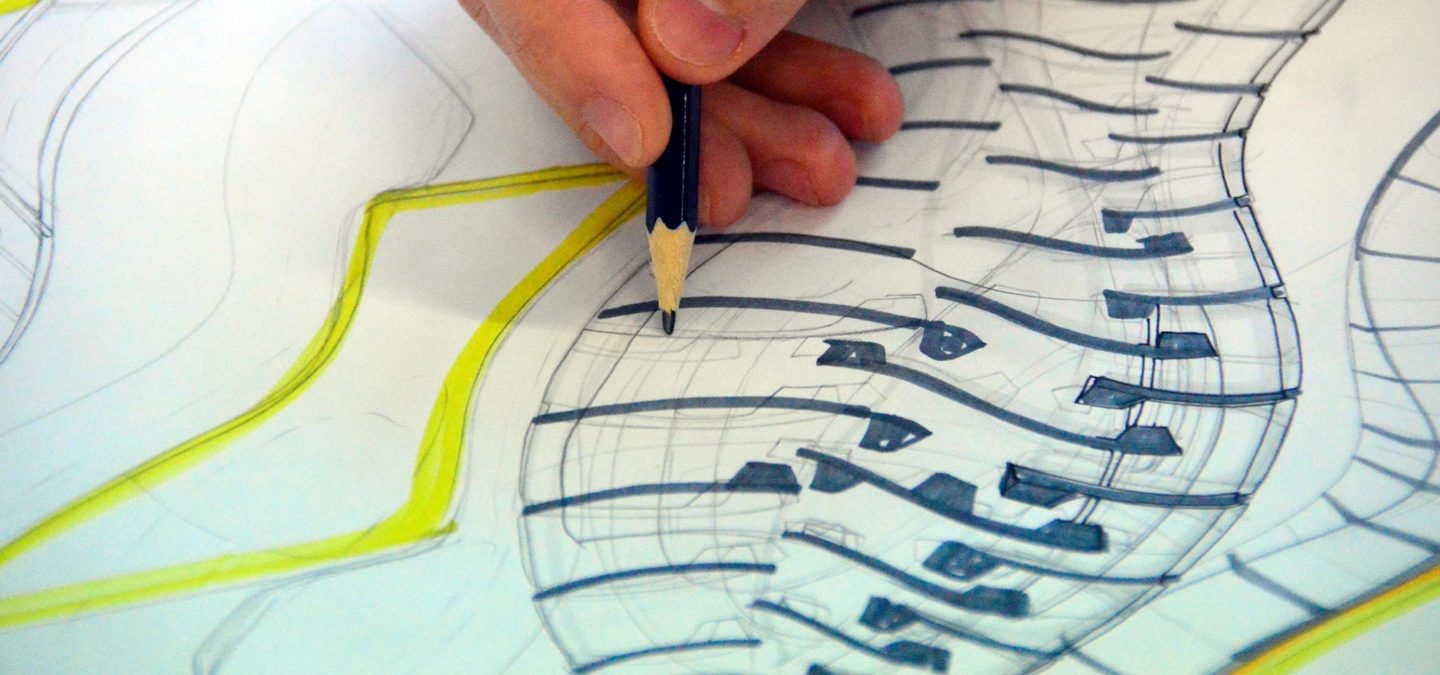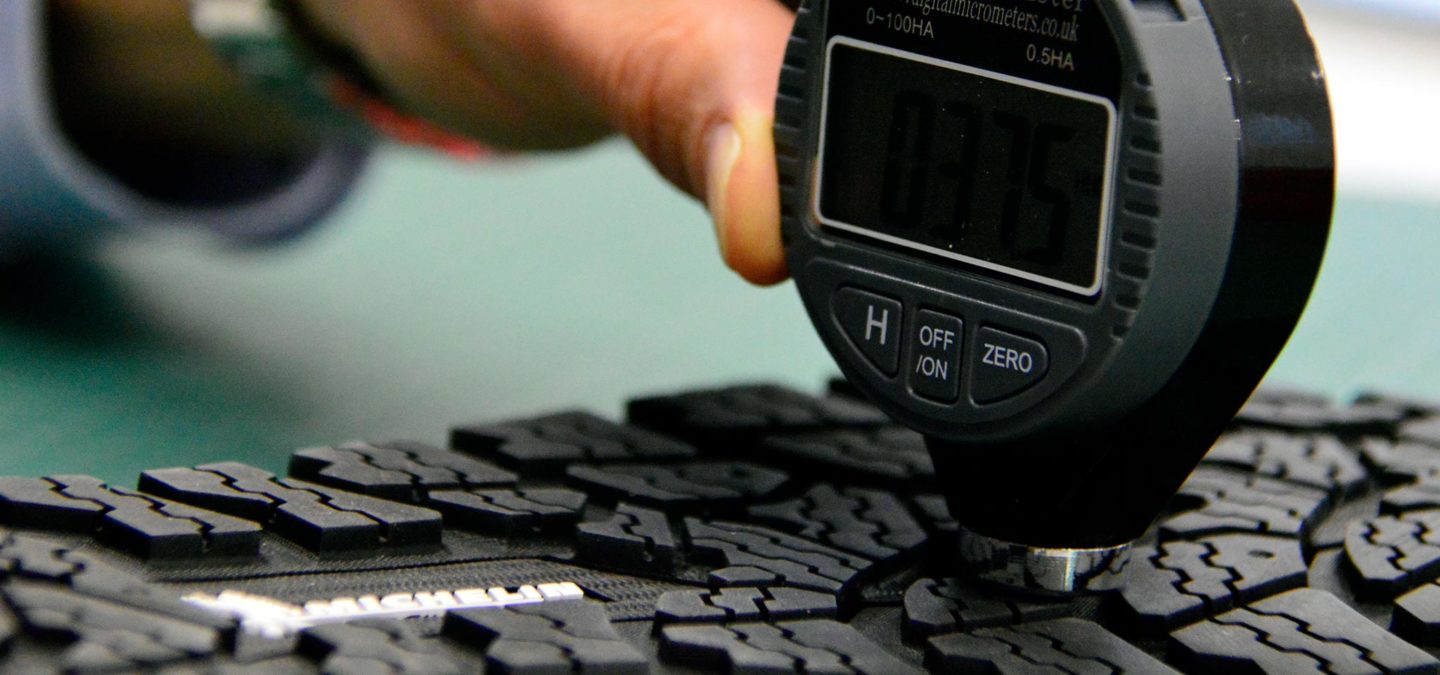Soles by MICHELIN are all about peak performance. Over a century of innovation and expertise in tires helps us create technical soles for however you choose to move.
But it’s not like we’re just sticking a strip of tire rubber on a shoe.
The reality is, obviously, much more complicated. It’s our knowledge of tires, treads, compounds, what works and what doesn’t, that we apply to every sole.
Some of it is art. Mostly it’s science. The science of tribology.
Tribology is all about grip. Friction, wear and lubrication. In essence, the study of surfaces in motion interacting with each other.
Or, as Technical Director for Michelin Brand Licensing, Emmanuel Igier, puts it: “The science of contact.”
Tires making contact with the road. Shoes making contact with the ground.
A true understanding of tribology is behind exceptional performance for both.
So how does it work?
The Big Questions
When we create a new tire, it goes through thousands of kilometres of testing. But shoes are used for all kinds of activities on virtually any sort of surface – the same level of accuracy just isn’t possible.
Instead, we mostly rely on computer modelling. This is faster, more accurate and more consistent than field tests, but the results are only as good as the knowledge and understanding that goes into the models.
That knowledge comes from tribology. From decades of experience in developing specialised compounds for different situations and environments.
“We have developed knowledge in tribology to answer the questions we face in the tire business,” says Emmanuel. “We can now use this knowledge to solve problems in other domains.”
And that insight is the key. The technology itself needs to adapt to the specific requirements of a sole, which are very different to a tire.

Athletes are working with different surfaces, at various speeds and climates. Aquaplaning is one of the biggest concerns when we design a premium tire, but it doesn’t factor into a sole at all.
Knowledge of tribology allows us to respond to these differences and improve performance.
“No one runs at 300kph, so the frequency of contact with the ground is very low compared to a tire. Understanding the differences allows us to exploit those differences to create a better product.”
Emmanuel Igier
Think about how a shoe will behave in mud or snow. Treads need to have smaller blocks, with greater voids between them, so they can disperse lumps of dirt or slush and maintain grip.
If we did the same with a tire, it would dramatically increase the wear.
And as Emmanuel explains, the rubber that’s used for a sole simply wouldn’t work on a tire.
“The compounds used to increase adherence of a sole would not last an hour on a tire, as the frequency of contact with the road is so much greater,” he says.
As for using a tire compound on a sole? Well, most likely you’d slip and slide your way down the trail rather than running with any purpose, thanks to the lack of traction.
Testing and Development
Of course, there are some overlaps in the science.
The contact patch is the area of a tire – or a sole – that is touching the surface at a given moment. The size and shape of this patch is dictated by the tread pattern, and affected by the various forces acting on it.
Racing drivers want their tire contact patches to be large and sticky, to improve grip and maximise the potential of the engine. The grip and distribution of pressure required by a runner is quite different.
But Emmanuel notes there is actually some crossover in a mountain bike tire, which experiences pneumatic pressure more like that seen in footwear. The physical forces and the contact patch are very similar, and the tread patterns for running shoes often reflect that.
Where these overlaps exist, we can adapt our development and testing to suit.
Indeed, Michelin has developed its own unique grip testing machine. It’s highly confidential, and pretty much under lock and key, but it’s used for adherence testing in both tires and soles.

Transferring the Knowledge
Nevertheless, it’s simply not possible to reflect the wear inflicted by weeks and months of use in the testing environment, so that’s where computer modelling comes in.
Our knowledge of tribology, compounds and the formulae for creating them allows us to design a sole destined for just about any purpose.
“A good compound for a tire is not going to be a good compound for a sole. But we have developed the knowledge within Michelin to look at problems from a different perspective.”
Emmanuel Igier
That design, and the models we use to test it, all come from decades of experience. From studying the forces and the environments that affect compounds and treads under all conditions.
When that knowledge is transferred from tire to sole, and applied effectively to other premium products, the science speaks for itself.
